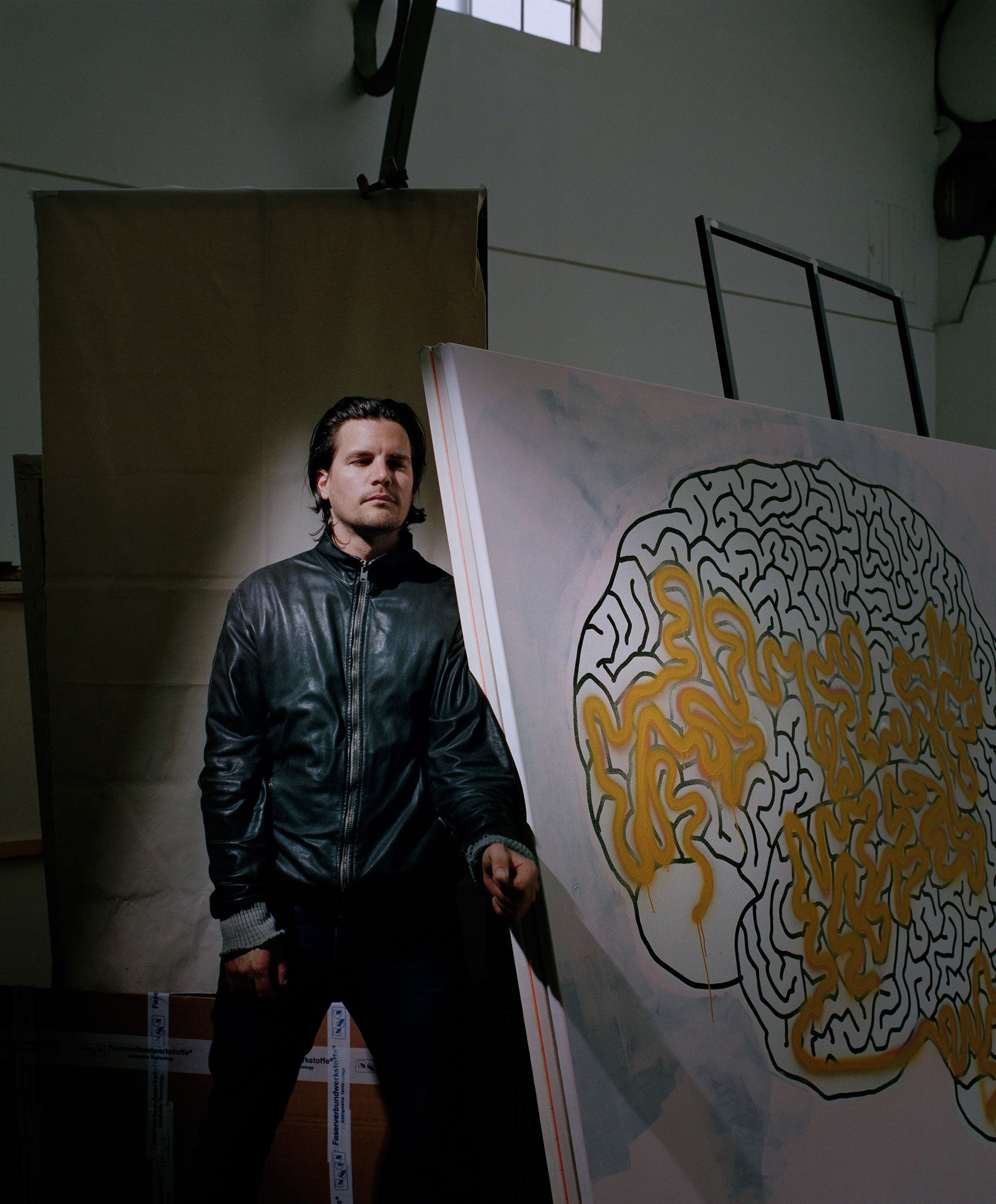Michael Sailstorfer, artist: "When you install a piece in the woods, people don't know if it's a house or an accident"
Souvenir sculptures drilling through walls; trees hanging upside down; cabins consuming themselves: there is a sense of entropy in much of Sailstorfer's work. But there is also a sense of mystery as to how these objects got there

Michael Sailstorfer works in a large building he shares with several artists. Situated as far east as one can go in Berlin, it was originally built as a film studio.
Sailstorfer says that Marlene Dietrich "was in front of the camera for the first time here", but when he found it in 2006 it was a laundry. His space is a bit of a Tardis: entering through a dark tunnel, you emerge into a large, light-flooded room filled with work. A mezzanine office is where Sailstorfer has his computers and desk.
Sailstorfer was born in Bavaria in 1979. He studied first in Munich before doing his MA at Goldsmiths College in London, returning to Munich to complete his BA in 2005 – a strange progression, we mutually agree. Sailstorfer tells me that his father also trained as an artist, graduating in 1979, the same year that Michael was born. "It was much harder to make a living as an artist," he recalls. "The whole scene was much smaller and there were fewer collectors, so he decided to take over his father's stone workshop."
Sailstorfer uses the forests of Bavaria and, in particular, his father's farm as his testing ground for some of his work, which includes catapulting trees into space, a commission for a research centre for regenerative energy. He recalls packing the trees into pipes with large amounts of compressed air underneath. "It was really exciting and we shot eight trees six metres high." The only witnesses were the photographer and himself. "It's magical just having documentation."
Souvenir sculptures drilling through walls; trees hanging upside down, dusting the floor with their branches; cabins consuming themselves; tyres spinning against walls and eventually shredding and dying: there is a sense of entropy in much of Sailstorfer's work. But there is also a sense of mystery as to how these objects got there. "I wanted to give more space to the viewer," Sailstorfer says.
"When you install a piece in the forest, people come by and they are just there; when you go to a museum you have a different intention. In the woods, they just walk by and I like that moment of irritation. They don't know if someone is building a house or if there was a chemical accident, and the process starts."
Sailstorfer's artistic heroes include, not surprisingly, Bruce Nauman and Gordon Matta-Clark, but he also likes Isa Genzken's approach because she does not care about the viewer or the audience. "It feels free and open: you should have all the possibilities".
Sailstorfer's piece, Folkestone Digs, started a rush on metal detectors in the Kent area, and was the subject of more press in the opening weekend than many artists get in their lifetime. He has buried 30 individual pieces of 24-carat gold beneath the sand of the Outer Harbour beach. It is a reprise of an earlier work in which he buried gold in a small town in Germany and then released the information, leading to a crazed search. People still turn up with diggers, hoping to find a rogue piece. "Every viewer unfolds their own layers," he says.
'Michael Sailstorfer: Folkestone Digs' continues at Lookout, Folkestone Triennial, until 2 November
Subscribe to Independent Premium to bookmark this article
Want to bookmark your favourite articles and stories to read or reference later? Start your Independent Premium subscription today.

Join our commenting forum
Join thought-provoking conversations, follow other Independent readers and see their replies